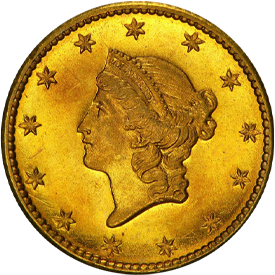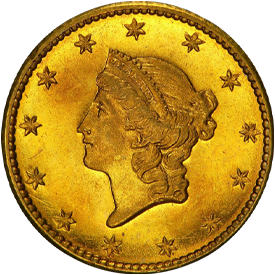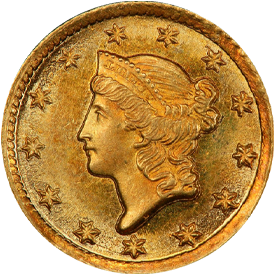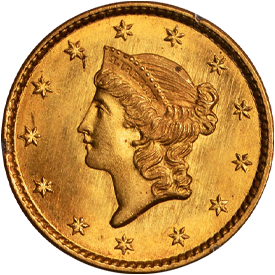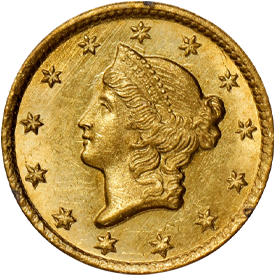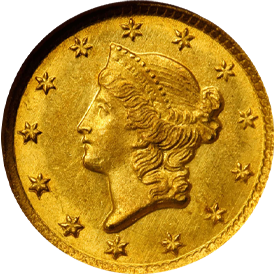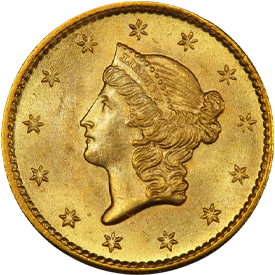Designed by: James Barton Longacre
Issue Dates: 1849-1854
Composition: 90% gold, 10% copper
Diameter: 13 mm
Weight: 1.67 grams (25.77 grains)
Edge: Reeded
Business Strike Mintage: 12,565,273
Proof Mintage: Fewer than 50
The gold dollar denomination made its debut in 1849. The obverse of the style minted from then to 1854 depicts the head of Miss Liberty facing left, her hair tied at the back, and wearing a coronet inscribed LIBERTY. Thirteen stars surround. The reverse depicts a wreath open at the top enclosing the numeral 1, the value DOLLAR, and the date. The inscription UNITED STATES OF AMERICA surrounds. Measuring just 13 mm in diameter, the gold dollar of the 1849-1854 type is the smallest United States coin, being even smaller than the 14 mm silver three-cent piece.
Production was continuous from 1849 through 1854. Examples were produced primarily at the Philadelphia Mint, but the facilities at New Orleans, Dahlonega, Charlotte and San Francisco contributed as well. All of the Charlotte and Dahlonega coins are scarce today, and some are very rare.
The type set collector will probably want to acquire a Philadelphia Mint gold dollar in this span, for these are far more plentiful than those of branch mints and also are better struck. Charlotte and Dahlonega coins in particular are nearly always very weakly defined in certain areas. Examples of Philadelphia Mint gold dollars are readily available in various grades from Very Fine to AU. Uncirculated pieces are scarce, and superb Uncirculated coins are rare.

